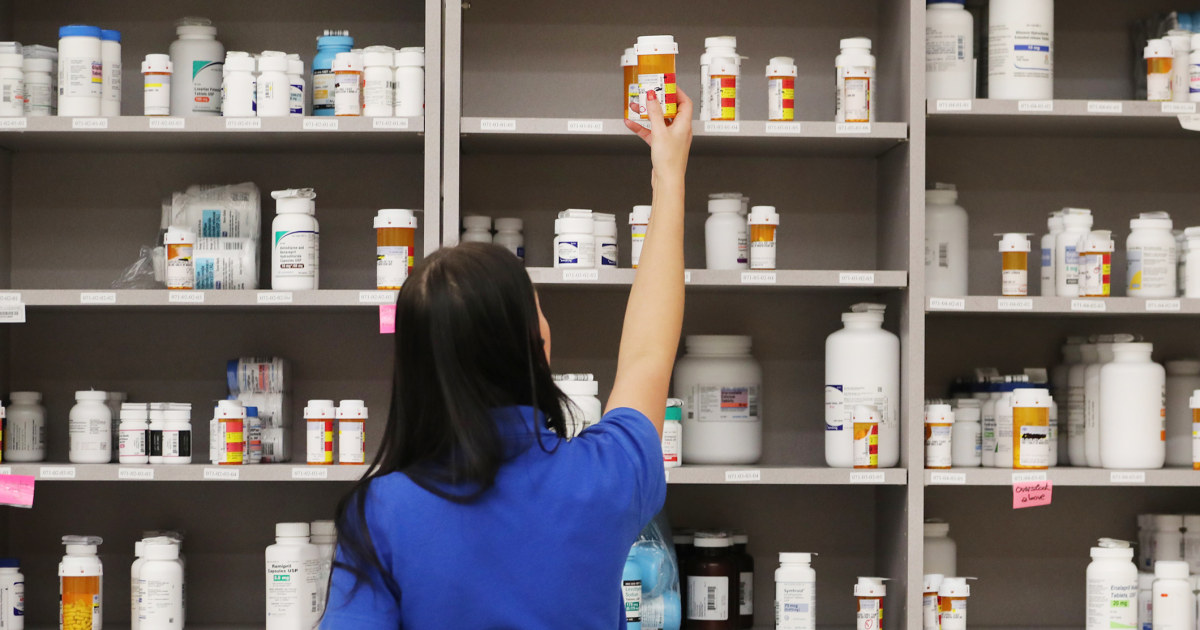Report: Proposed Tariffs Could Hike U.S. Drug Prices by Billions
A new report has found that a 25% tariff on pharmaceutical imports could considerably increase drug costs for American consumers.
A 25% U.S. tariff on pharmaceutical imports would increase U.S. drug costs by nearly $51 billion annually, boosting U.S. prices by as much as 12.9% if passed on, according to a report commissioned by the industry’s U.S. trade group.
The analysis, conducted by Ernst & Young (EY), found the United States imported $203 billion in pharmaceutical products in 2023, wiht 73% coming from Europe — primarily Ireland, Germany and Switzerland. Total U.S. sales of finished pharmaceuticals that year where $393 billion, according to the report.
The report, dated April 22 and not made public, was commissioned by the main U.S. pharmaceutical lobby,the Pharmaceutical Research and Manufacturers of America (PhRMA),whose members include Amgen,Bristol Myers Squibb,Eli Lilly,and Pfizer,among others.
Industry Concerns and Potential Impacts
PhRMA did not immediately respond to a request for comment. The group has argued tariffs would undermine efforts to boost domestic manufacturing, a goal of U.S. President Donald Trump.
Pharmaceutical products have long been spared from trade wars due to the potential harms, but he has repeatedly threatened a 25% tariff on pharmaceutical imports.
Last week, the Trump management announced probes into pharmaceutical imports, citing national security concerns over reliance on foreign drug production.
The move triggered a 21-day public comment period as part of the investigation led by the Commerce Department.
Drugmakers see the probe as a chance to show the administration that high tariffs would hinder their efforts to swiftly ramp up U.S.production, and to propose alternatives, said Ted Murphy, a trade lawyer at law firm Sidley Austin, which is advising companies on their submissions to the Commerce Department.
drugmakers have also lobbied Trump to phase in tariffs on imported pharmaceutical products in hopes of reducing the sting from the charges.
On Thursday, Swiss drugmaker Roche said it is petitioning the U.S. government in direct talks for import tariff exemptions, arguing the products it ships into the United States are offset by it’s exports of U.S.-made drugs and diagnostics.
How Tariffs Could Affect Consumers
production costs are only one factor shaping the price of newer medicines and it is unclear to what extent tariffs on imported intermediate inputs or imported finished products would be passed forward to consumers, the report said.
Tariffs on imported finished products could be passed through to consumers by the wholesale or retail distributors paying the tariff.
But if duties were fully passed on through higher prices on domestic sales, EY estimates U.S. drug prices could rise up to 12.9%.
| Scenario | estimated Impact on U.S. Drug Prices |
|---|---|
| 25% Tariff on All Pharmaceutical Imports | Up to 12.9% increase |
| Tariffs on Imported Ingredients Only | 4.1% increase in domestic production costs |
For Americans already struggling with high healthcare costs, this potential price hike is a significant concern. A recent Kaiser Family Foundation poll found that one in four adults say it’s difficult to afford their prescription drugs.
Impact on U.S. Manufacturing and Exports
Approximately 30% of pharmaceutical imports in 2023 were ingredients used in U.S. manufacturing and then exported or sold in the United States.
Tariffs on these would raise domestic production costs by 4.1% and reduce the global competitiveness of U.S.-made drugs, the report said.
Roughly 25% of U.S. pharmaceutical output is exported,which totalled $101 billion in 2023.EY said a portion of the 490,000 export-related jobs in the industry could be at risk if higher input costs weaken foreign demand for U.S. medicines.
The report did not include the impact of possible retaliatory tariffs. The economic impact of those for U.S. producers would be much more significant.
Counterargument: Boosting Domestic Production
While the report highlights the potential negative impacts of tariffs, some argue that they could incentivize increased domestic pharmaceutical production, ultimately reducing reliance on foreign imports and strengthening national security.
However,critics contend that building new manufacturing facilities and scaling up production takes time and significant investment,and that tariffs would impose immediate and substantial costs on consumers before any potential benefits from increased domestic production are realized.
FAQ: Potential Pharmaceutical Tariffs
- How much could drug prices increase if the proposed tariffs are implemented?
- According to the EY report, U.S. drug prices could rise by up to 12.9% if the tariffs are fully passed on to consumers.
- What countries are the primary sources of U.S. pharmaceutical imports?
- The report indicates that the United States imports the majority of its pharmaceuticals from Europe, primarily Ireland, Germany, and Switzerland.
- What are the potential long-term effects of these tariffs?
- the long-term effects could include reduced global competitiveness of U.S.-made drugs, potential job losses in the pharmaceutical export sector, and increased healthcare costs for American consumers.
- Why is the U.S. government considering these tariffs?
- The Trump administration has cited national security concerns over reliance on foreign drug production as the reason for investigating pharmaceutical imports and considering tariffs.






)

